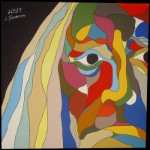 Considered to be one of the world's greatest pianists, Franz Liszt's career spanned virtually the whole of the Romantic period. Considered to be one of the world's greatest pianists, Franz Liszt's career spanned virtually the whole of the Romantic period.
He taught and aided two generations of younger musicians and laid the foundation for much of the 20th century's composition.
Franz Liszt was the son of a talented amateur musician who was a steward in the service of the Esterhazy family.
Franz Liszt was a child prodigy at the piano and, by the time he was eleven, he had performed in many parts of Europe. At the age of 10 he moved with his family to Vienna, where he studied with Carl Czerny and Antonio Salieri and played for Beethoven.
In 1823 his family moved to Paris, but Liszt was denied admission to the conservatory because of his youth and foreign origin.
He had no further formal piano instruction, though he studied composition with Ferdinando Paer and Anton Reicha.
Franz Liszt toured for several years as a recitalist before he settled (1834) in Geneva, Switzerland, with the Countess Marie d'Agoult. One of their three children, Cosima, married the conductor Hans von Bulow and then Richard Wagner; another, Blandine, married Emile Ollivier, premier of France at the outbreak of the Franco-Prussian War of 1870-1871.
In 1839, Franz Liszt embarked on a series of concert tours throughout Europe.
In 1844, Franz Liszt was appointed musical director in Weimar; he settled there in 1848 and abandoned concertizing to devote himself to conducting and composition. From these Weimar years come his best-known large compositions: the two piano concertos, "The Totentanz" (Dance of Death) for piano and orchestra, the "Dante Symphony" (1856), and the monumental "Faust Symphony" (1854-57).
Franz Liszt also invented a new form, the symphonic poem, an orchestral composition that follows a literary or other program; it consists of a single movement, generally organized either as a loose sonata form, as in "Tasso", or as a one-movement symphony, as in "Les Preludes".
Eleven of his twelve symphonic poems date from his first Weimar period.
Franz Liszt unified his larger works by deriving their thematic materials from one or more short motifs.
"The Hungarian Rhapsodies", Franz Liszt's best-known solo piano works, were based on Hungarian urban popular music rather than folk music.
Franz Liszt left Weimar for Rome in 1859 with the Princess Carolyne von Sayn-Wittgenstein, whom he met on a concert tour in Russia in 1847 and with whom he lived until 1863.
After they separated, Liszt turned to writing religious music, including two masses, the Legends for piano, and the oratorio "Christus" (1863).
In 1865 he joined the Franciscans and was given the title of Abbe. Here he found expression for his long-held spiritual leanings and he composed many religious works.
From then on he divided his time between Rome, Weimar, where he had many pupils, and Budapest, where he was regarded as a national hero.
Franz Liszt returned to Weimar in 1869, but after his appointment as president of the New Hungarian Academy of Music in Budapest in 1875 he divided his time between Budapest, Weimar, and Rome.
The works of Franz Liszt's late years, misunderstood by his contemporaries, are surprisingly modern in concept and anticipate many of the devices of Claude Debussy, Maurice Ravel, Bela Bartok, and the Austrian expressionists.
He died while attending the Wagner festival in Bayreuth, Germany.
|